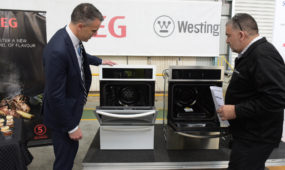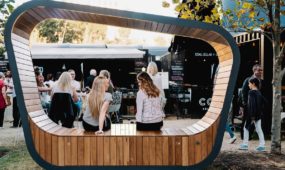360-degree radar for driverless cars launched
Manufacturing
NEW technology that upgrades conventional car sensors into 360-degree radar was launched today in Australia.

Sign up to receive notifications about new stories in this category.
Thank you for subscribing to story notifications.
Cohda Wireless, a global leader in in V2X (vehicle to everything) technology, demonstrated its V2X-Radar on the streets of Adelaide, South Australia.
The single antenna provides a new sensor for cars, including driverless cars, that can detect buildings, road signs and even older vehicles not equipped with car-to-car communications.
Unlike current technologies, Cohda’s V2X-Radar is unaffected by rain, snow or fog, and can ‘see’ around corners.
Cohda Wireless will demonstrate their V2X-Radar at the International Driverless Cars Conference, being held in Adelaide between 5-6 November and culminating with the first on-road demonstration trials of driverless cars in the Southern Hemisphere as part of the ARRB Australian Driverless Vehicle Initiative.
Cohda Wireless CEO Dr Paul Gray says the V2X-Radar is a low-cost addition to a standard V2X system that adds radar functionality to the V2X connected car and “improves their view of the world”.
“V2X systems are essential for driverless cars, extending their view beyond that of traditional sensors,” he says. “V2X-Radar pushes this even further, allowing driverless cars to sense the environment in ways not previously imagined.”
“This technology has the opportunity to revolutionise the industry by addressing some of the key constraints of the technology so far.”
According to Dr Gray, the V2X-Radar uses the IEEE 802.11 compliant wireless signals of current V2X systems to share sensor information between vehicles and infrastructure.
These radio signals bounce off walls, road signs and other vehicles as they travel from transmitter to receiver. V2X-Radar can use these radio waves to identify objects within that environment, including non-V2X equipped vehicles.
Combined with a 3D map, the V2X-Radar can provide highly accurate positioning and can also instantly detect vehicle speeds via Doppler measurements.
Cohda’s V2X-Radar is a software application that works with standard transmissions from any V2X system, whether it’s on a vehicle or on the roadside.
“The radar is standards-compliant, requiring no additional hardware in a V2X-equipped vehicle and no additional on-air messages. All it needs is our software in the receiving vehicle. V2X-Radar Currently works with the NXP Roadlink chipset,” says Dr Gray.
Dr Gray said V2X-Radar solved the ‘chicken-or-egg problem’ of delivering value for drivers in the early days when only a few ‘connected cars’ were on the road.
“The challenge of deploying V2X is providing clear benefits for early adopters,” he said. “V2X-Radar solves this problem because it uses standard V2X radio signals to sense the surrounding environment, transforming a standard V2X communications system into a 360-degree car radar.”
Delphi Automotive PLC, a company that will supply GM with connectivity technology to let cars “talk” with one another and provide drivers with critical safety in formation, uses Cohda’s safety applications software.
Jump to next article



